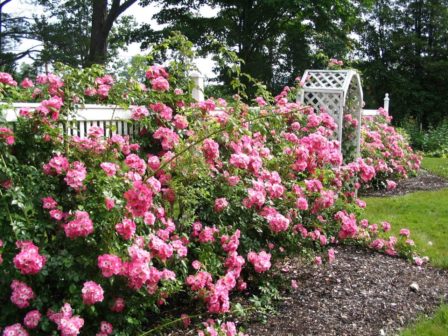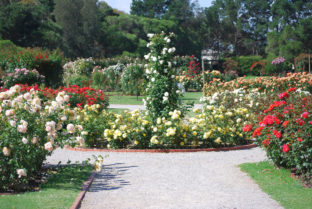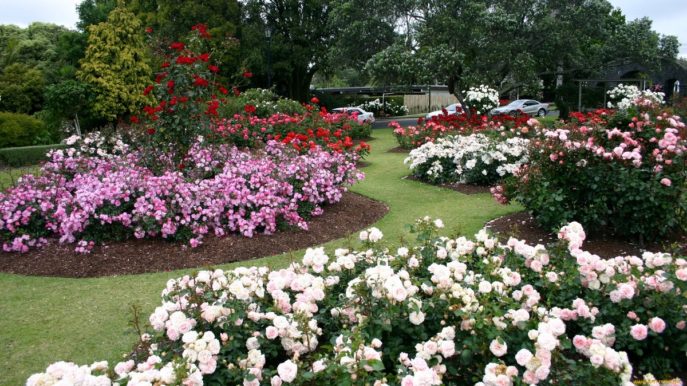Park roses are beauty, grace and aristocracy. This garden culture consists of many varieties, and thanks to the work of breeders, their number increases from year to year.
Material Content:
- 1 Park roses - what is it, description
- 2 The best varieties for the Moscow region, the Urals, Siberia
- 3 English and Canadian Park Roses
- 4 Varieties that do not require shelter for the winter
- 5 Planting park roses in the open ground
- 6 Care and growing flowers
- 7 Disease and Pest Prevention
- 8 Park roses in landscaping
Park roses - what is it, description
Park rose is often called cultivated decorative rose hips. Bushes reach about 150 cm in height. They prefer space, as they greatly expand in width. Buds appear early, buds are formed on both young and last year's shoots, and abundant flowering lasts 4-5 weeks. The flowers are lush, terry. One flower can consist of up to 150 petals.

The variety of shades is very large. The entire palette is presented from white to red. There are bright orange, purple and black varieties.
In English and French parks, these roses do not shelter for the winter, but in the conditions of our winters, most varieties require warming. Although there is a small group of plants that are characterized by increased frost resistance.

Varieties bred in Canada do not need shelter if the following conditions are met:
- proper processing;
- plenty of sunshine;
- location in a quiet and calm area;
- low water table.
However, gardeners noticed that even Canadian park roses bloom better if they are not covered in winter.
The best varieties for the Moscow region, the Urals, Siberia

The best varieties for these regions:
- Golden Celebration. Hybrid D. Austin. The flowers are lush, bright yellow in color with a strong lemon-caramel aroma. It tolerates frosts and is unpretentious in cultivation.
- Louise Odier. Pink flowers have an almost perfect cupped shape. Flowering is plentiful. The aroma is delicate, lemon.The shoots are long, flexible and graceful.
- Chinatown. The flowers have a dark yellow honey color with a pleasant fruity aroma. The bush is branched, with dense greenery. He feels quite well even on relatively poor soils.
- Champlain. Flowers have a rich velvet-scarlet hue. Yellow stamens are visible in the middle. Flowering is plentiful and continuous. The bush is compact, but grows slowly, as it spends all its energy on flowering. Resistant to frost and various diseases.
- Morden Sunrise. It has beautiful yellow flowers with pink edges. The leaves are dark green, shiny. It propagates well by cuttings, can tolerate winter without shelter.
Lovers of roses will like these varieties: they are decorative, do not require special attention.
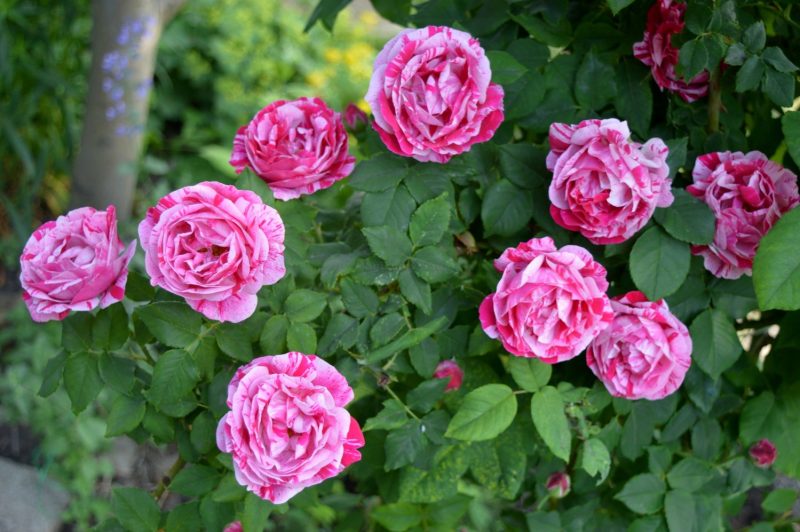
Separately, it must be said about Ferdinand Pichard, which for many years was considered one of the best re-blooming roses. The flower was brought out by an amateur. Flowers have an interesting coloring: against the background of light pink petals, raspberry stripes and spots are randomly scattered. Over time, the pink color fades and becomes white, and the crimson - purple. The first wave of flowering begins in the early summer, the second in the fall.
English and Canadian Park Roses
Canadian roses are good because their flowers are as graceful as those of hybrid tea roses, and the plants themselves are unpretentious, like park ones. It is enough to plant bushes correctly once and then admire their magnificent flowering for years. A distinctive feature of Canadian varieties is high resistance to diseases and amazing frost resistance (many varieties can withstand up to -40 C).
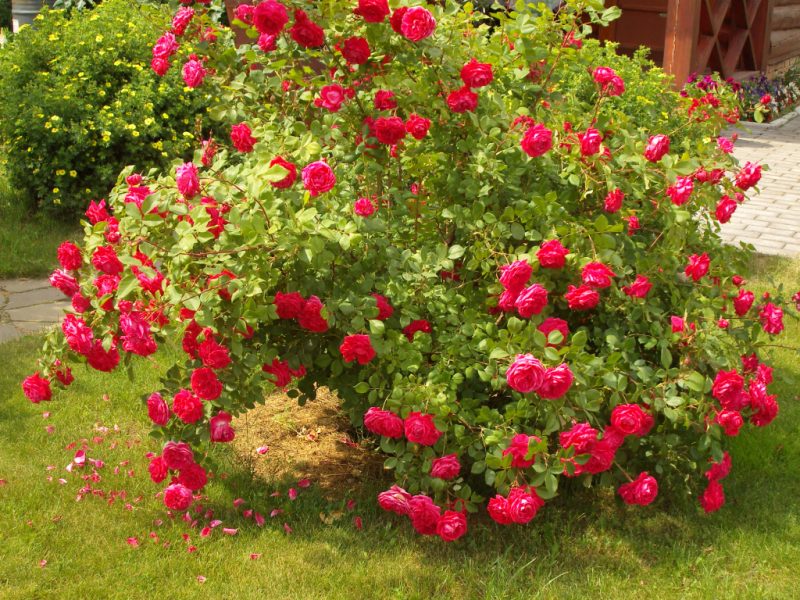
The best varieties:
- Alexander MacKenzie. This variety has been specially bred to survive in harsh winters. It easily withstands frosts down to -30 C. Blooms almost all summer. The buds resemble tulips, blossoming flowers of a saturated pink shade have a classic shape. The care is minimal, resistant to diseases and easily served by cuttings. It grows well in the sun and in partial shade.
- Charles Albanel. Low-growing hardy grade. The height of the bush is a little more than 50 cm. It blooms from early summer to the first frosts. Dark pink flowers have a very beautiful shape, although they do not grow densely.
- Martin Frobisher The height of the bushes can reach 2 m. Lush and fragrant branches have a light pink tint. Very unpretentious variety, requires a minimum of care.
English park roses can be bushy and climbing. In addition, they do not require special care, except for the fact that from time to time it is desirable to treat them with special drugs to protect against diseases. Also, they mostly require shelter for the winter. English park roses: Abraham Derby, Benjamin Britten, William Shakespeare 2000.
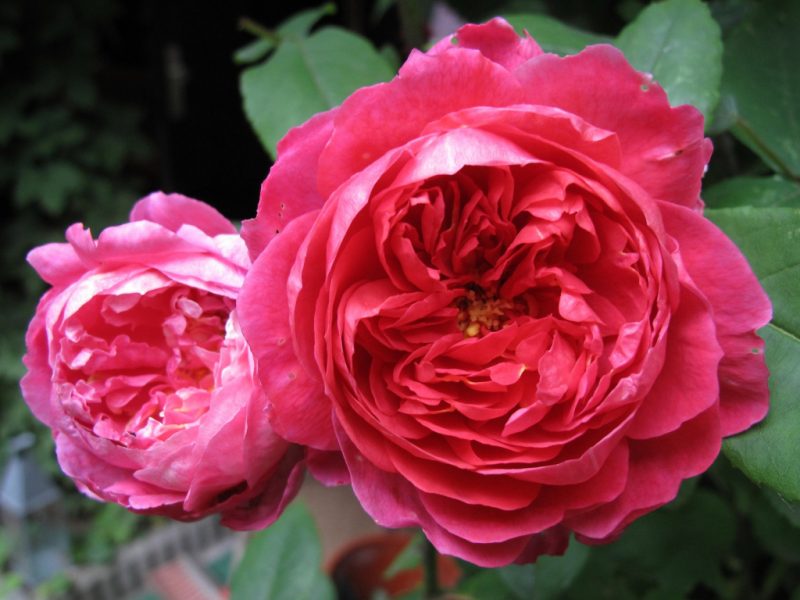
Rosa parky Remy Martin has a bright yellow tint and a strong aroma. It is highly resistant to pests, diseases and frost.
Varieties that do not require shelter for the winter
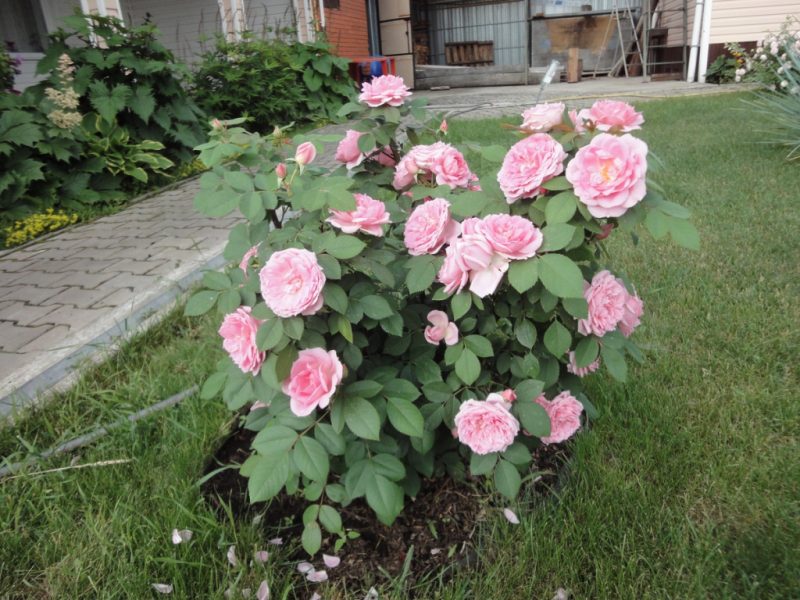
In winter, the following varieties do not require shelter:
- Prairie Joy. Dense flowers of a deep pink hue are collected in a brush of several pieces. Over time, they become pale pink. Strong-growing, winter-hardy grade. Sometimes suffers from black spotting.
- Wasagaming. Bright pink flowers have a strong aroma. The height of the bush reaches 1.8 m. An adult plant has a high decorative effect.
- Adelaide Hoodless. Needs support. Red double flowers on long flexible shoots are collected in lush inflorescences. Growing fast.
But still, young seedlings recommend shelter for the winter. Spread the bases of the bushes with earth, and wrap the branches themselves with kraft paper.
Planting park roses in the open ground
In order for the roses to bloom for a long time and abundantly, they need to pick up a sunny area protected from the wind with fertile breathable soil. Do not plant them in the shade under tall trees, as their flowering will not be plentiful.
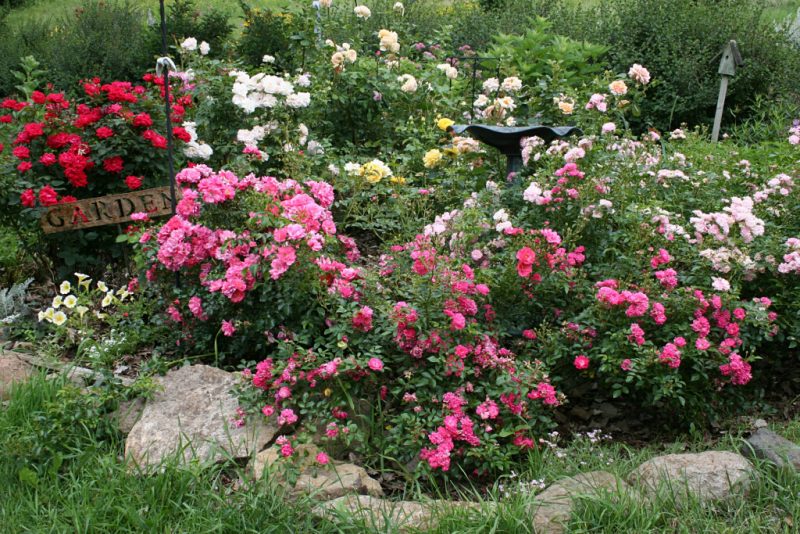
Roses can grow on any soil, but still they prefer light clay soil with lots of humus. If the clay soil is too heavy, it can be improved by adding peat or rotted manure.
It is best to plant park roses in the fall - from mid-September to frost, so that the plants take root. Then in the spring they will quickly start growing with renewed vigor.
Since park roses grow greatly in breadth, it is better to plant them initially at a respectful distance from each other. It is also necessary so that the bushes can be conveniently processed and covered in the cold season.
Landing technology is quite simple. Dig a hole, add compost and bone meal mixed with earth to it. Form a knoll at the bottom and carefully set the seedling so that the roots descend. After that, fill it with earth so that the root neck is 2-3 cm below the soil level. It remains to compact the soil, water and mulch the earth. During the autumn planting, seedlings spud, preparing for frost.
Care and growing flowers
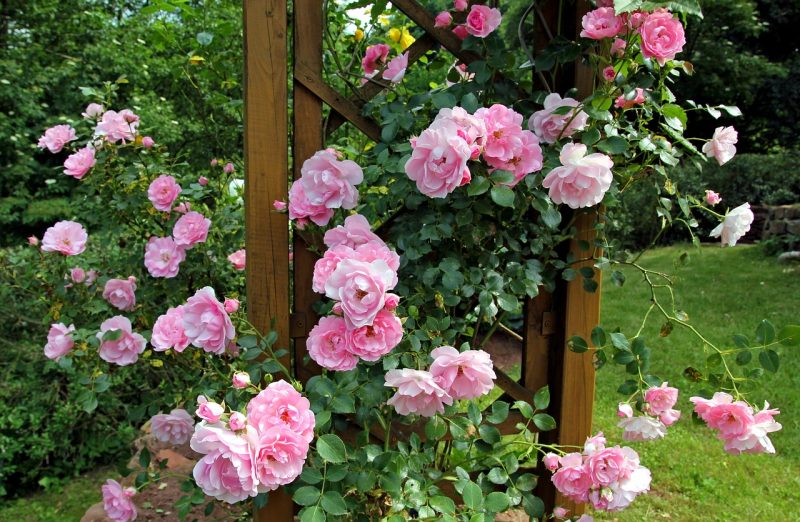
In order for roses to please the owner with flowering for many years, you should know some nuances regarding care:
- In the first three years, it is imperative to regularly loosen the soil around the bushes, feed 3-4 times a season, and fertilize with manure in the fall. During this period, the formation of the root system and skeleton of branches takes place.
- It is useful to fertilize plants periodically with infusion of ash.
- Watering should be plentiful, but not frequent. The main thing is that water penetrates well inside, to the roots.
- It is not worth trimming sturdy shoots in late summer and autumn. So roses will better survive the winter.
- Hilling to carry out before the onset of steady colds to a height of 20 cm. Cut young branches. Then the plant should be wrapped with lutrasil, and a little later covered with spruce branches.
If a winter thaw sets in and the temperature rises above -8 degrees, slightly open the shelter for ventilation. If this is not done, mold may develop. In the spring, you need to remove the shelter on time in order to prevent overheating.
Disease and Pest Prevention
Park roses sometimes suffer from powdery mildew and a sphere library. If measures are not taken, the plants may even die. For prevention, in the spring before the start of the growing season, all bushes are sprayed with a solution of iron sulfate, and during flowering with modern drugs.

Of the pests, weevils, aphids, spider mites and leafworms are most often found. They damage buds, leaves, buds, flowers. In order to prevent the appearance of pests, it is necessary to feed bushes on time and properly, regularly loosen the ground, and remove weeds. When watering, try to water only a piece of land near the trunk to avoid excessive moisture. In case of invasion of uninvited guests, spray the plants with Vermitek, Aktofit or Fitoverm.

Proper care of roses and timely prophylaxis minimizes the likelihood of pests.
Park roses in landscaping
Park roses are widely used for decoration of gardens and summer cottages. They look beautiful throughout the growing season: in spring, they are pleasing to the eye with fresh green leaves, in summer - lush flowers, in autumn - the picturesque color of leaves and fruits.
These plants look equally good both in group and in single plantings.
It is convenient for them to decorate arbors, arched openings. They also look great in the background of the flower garden. Landscape designers often use them for landscaping urban squares and sections along roads, as they are not demanding on growing conditions.
Park roses are worthy of creating beauty and harmony.


